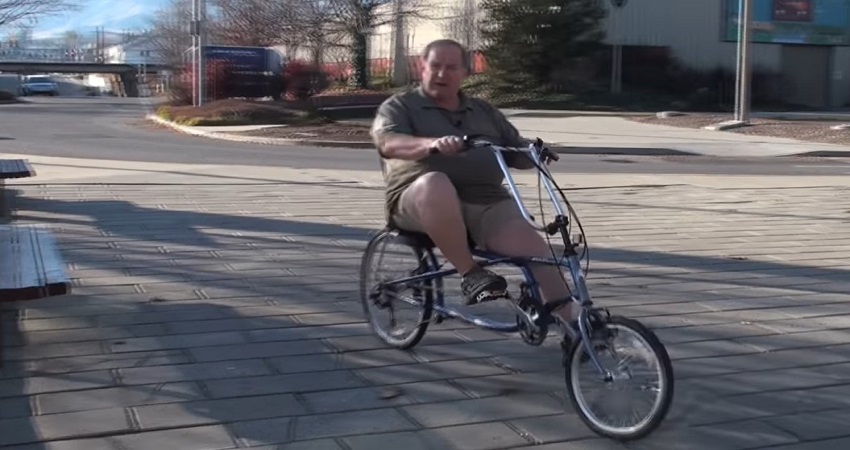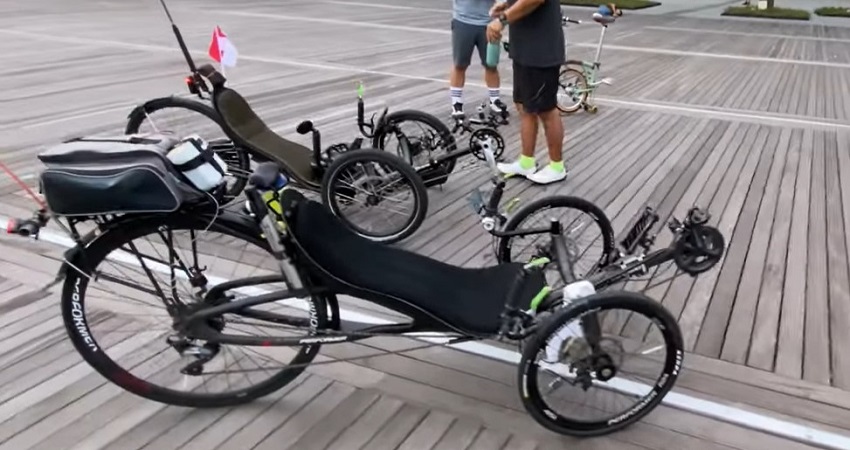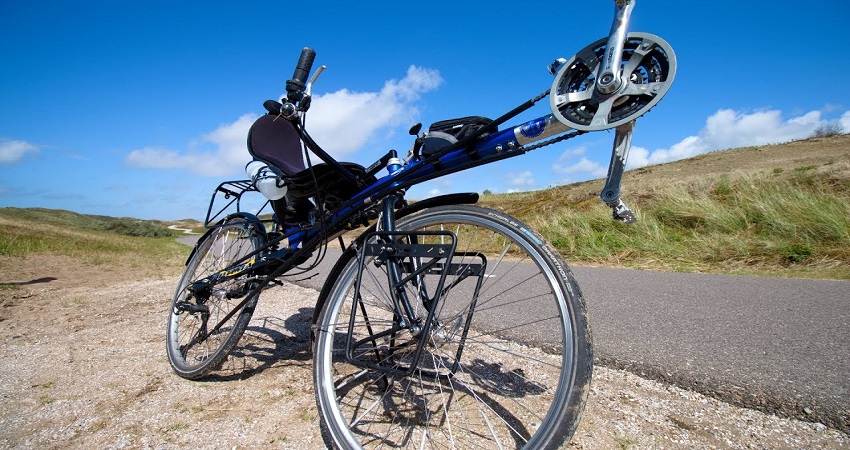
Is A Recumbent Bike Better Than An Exercise Bike?

A recumbent bike offers better comfort and lower impact compared to an exercise bike. Recumbent bikes provide a comfortable seating position and support for the back, making them a good choice for individuals with back or joint issues.
They are also gentler on the knees and joints due to the reclined position and larger seat. Additionally, recumbent bikes often offer more features and options for a varied and engaging workout. Whether you are a beginner or an advanced fitness enthusiast, a recumbent bike can provide an effective and enjoyable cardiovascular exercise experience.
So, let’s explore the advantages of recumbent bikes over exercise bikes and find out if it is the right choice for you.
Comfort And Ergonomics
A recumbent bike offers superior comfort and ergonomic support compared to a traditional exercise bike, ensuring a more enjoyable and effective workout experience. Its design helps reduce strain on the back and joints, making it a better choice for those seeking a more comfortable and sustainable exercise option.
When considering whether a recumbent bike is better than an exercise bike, one of the key factors to focus on is comfort and ergonomics. The design and support provided by the seat and backrest can greatly affect the overall experience and long-term usability of the bike.
Seat Design
The seat design of a recumbent bike is notably different from that of an exercise bike. Recumbent bikes have a larger, bucket-style seat that resembles a chair and offers a more relaxed riding position. This design allows for better weight distribution and reduces pressure on the lower back and buttocks, ensuring a comfortable ride for extended periods. On the other hand, exercise bikes typically have a smaller, saddle-style seat that can sometimes be narrow and hard. This design might cause discomfort and strain during longer workout sessions, particularly for individuals with existing back or hip issues.
Back Support
When it comes to back support, recumbent bikes excel. Recumbent bikes provide a built-in backrest that supports the natural curve of the spine. This feature helps maintain proper posture and reduces the risk of back pain or fatigue during workouts.
In contrast, exercise bikes may lack proper back support, forcing the rider to rely solely on their core muscles to maintain an upright position. This can be challenging for individuals with weaker core strength or those with back problems, increasing the likelihood of discomfort or strain.
In conclusion, recumbent bikes offer superior comfort and ergonomics compared to exercise bikes. The seat design and back support of recumbent bikes promote a more natural and relaxed riding posture, reducing the risk of discomfort or strain during workouts. If comfort and long-term usability are your priorities, then a recumbent bike might be the better choice.
Joint Impact And Injury Risk
When it comes to choosing between a recumbent bike and an exercise bike, one important factor to consider is the impact on your joints and the risk of injury. The type of bike you choose can greatly affect how your joints are impacted during your workout and can play a significant role in reducing the risk of injury.
Lower Joint Impact
A recumbent bike offers a lower joint impact compared to an exercise bike. This is due to the design of the recumbent bike, which features a reclined seating position that supports your back and puts less stress on your joints. The recumbent bike allows your feet to be positioned in front of you instead of directly below your body, which helps to minimize the impact on your knees, hips, and ankles.
The upright position on an exercise bike, on the other hand, can put more strain on these joints. The pedaling motion on an exercise bike can cause a greater impact on your knees, especially if you tend to pedal forcefully. This increased impact on the joints can lead to discomfort, pain, and even potential injuries, particularly for individuals who already have weak joints or are recovering from joint-related injuries.
Reduced Injury Risk
In addition to lower joint impact, a recumbent bike also offers a reduced risk of injury compared to an exercise bike. The reclined position on a recumbent bike provides better back support and stability, reducing the chances of strains or injuries to your back, neck, and shoulders.
The design of a recumbent bike also minimizes the risk of falls or accidents. The wider and more stable base of a recumbent bike, along with the lower center of gravity, makes it less prone to tipping over. This is especially beneficial for individuals with balance issues or those who are new to cycling exercises.
On the other hand, an exercise bike requires you to maintain an upright position, which can be challenging for individuals with balance problems or those prone to losing their balance. This increased risk of falling may lead to injuries, especially if you are not able to react quickly enough to prevent a fall.
Overall, a recumbent bike is a better option than an exercise bike when it comes to joint impact and injury risk. The reclined seating position and the overall design of a recumbent bike offer lower joint impact and reduced risk of injuries to your back and other upper body parts. If you’re looking for a safe and effective way to exercise without putting unnecessary strain on your joints, a recumbent bike is the ideal choice.
Muscle Activation And Workout Effectiveness
When it comes to working out, two popular options are the recumbent bike and the exercise bike. Both of these machines offer cardiovascular benefits and can help with weight loss and overall fitness. But when it comes to muscle activation and workout effectiveness, there are some key differences to consider.
Different Muscle Groups
Different muscle groups are targeted when using a recumbent bike compared to an exercise bike. This is mainly due to the different body position adopted on each machine. While both machines work the lower body muscles, the recumbent bike primarily focuses on the quadriceps, hamstrings, and glutes, whereas the exercise bike engages a wider range of leg muscles including the calves and shins.
Here is a comparison of the muscle groups activated on each machine:
| Recumbent Bike | Exercise Bike |
|---|---|
| Quadriceps | Quadriceps |
| Hamstrings | Hamstrings |
| Glutes | Calf Muscles |
As you can see, both machines target the quadriceps and hamstrings, but the recumbent bike places more emphasis on the glutes, while the exercise bike engages the calf muscles in addition to the other muscle groups.
Targeted Workout
The targeted workout on a recumbent bike is generally lower intensity compared to that on an exercise bike. This is because the seated position on a recumbent bike provides more support for the body and reduces the impact on joints. This can be beneficial for individuals with joint issues or those who are just starting their fitness journey.
However, if you are looking for a more intense workout that challenges your cardiovascular system and increases your heart rate, an exercise bike may be a better choice. The upright position on an exercise bike allows for a more intense and challenging workout, resulting in higher calorie burn and improved cardiovascular fitness.
Ultimately, the choice between a recumbent bike and an exercise bike comes down to personal preference and fitness goals. If you prioritize comfort and joint-friendly workouts, a recumbent bike may be the better option. On the other hand, if you are looking for a higher intensity workout that targets a wider range of leg muscles, an exercise bike would be more suitable.
Cardiovascular Benefits
One of the key reasons why people invest in exercise equipment is to improve their cardiovascular health. Both recumbent bikes and exercise bikes offer an effective way to engage in cardiovascular exercise, but they differ in terms of the benefits they provide. Let’s explore the cardiovascular benefits of a recumbent bike in comparison to an exercise bike.
Heart Rate And Oxygen Uptake
When it comes to heart rate and oxygen uptake, recumbent bikes excel. The reclined position of the recumbent bike allows for better blood flow and oxygen delivery to your muscles. This results in an increased heart rate and improved oxygen uptake. Moreover, the low-impact nature of recumbent biking reduces stress on your joints, making it a suitable exercise option for individuals with joint issues.
Aerobic Capacity
Aerobic capacity is a measure of your body’s ability to transport and utilize oxygen during exercise. Recumbent bikes play a significant role in improving aerobic capacity. By engaging larger muscles in your legs and maintaining a consistent pedaling motion, recumbent biking challenges your cardiovascular system and helps increase its efficiency. Regular workouts on a recumbent bike can enhance your body’s capacity to take in and use oxygen, improving your overall endurance.
A recumbent bike provides an effective way to boost cardiovascular health, enhance heart rate and oxygen uptake, and improve aerobic capacity. By choosing the right exercise equipment for your needs, you can enjoy all these cardiovascular benefits and achieve your fitness goals.
Cost And Space Requirements
One important factor to consider when comparing a recumbent bike and an exercise bike is the cost and space requirements. These factors can greatly influence your decision, especially if you have a limited budget or limited space in your home. In this section, we will discuss the price comparison between recumbent bikes and exercise bikes, as well as the space considerations you need to keep in mind.
Price Comparison
When it comes to price, recumbent bikes and exercise bikes vary in their cost. Recumbent bikes tend to be more expensive than exercise bikes, primarily due to their design and additional features. While exercise bikes come in various price ranges, from budget-friendly options to high-end models, recumbent bikes generally cater to those who are willing to invest a bit more in their fitness equipment.
To give you a better idea of the price comparison, here’s a table outlining the average price ranges for both recumbent bikes and exercise bikes:
| Recumbent Bike | Exercise Bike |
|---|---|
| Budget-friendly: $200 – $500 | Budget-friendly: $100 – $300 |
| Mid-range: $500 – $1,500 | Mid-range: $300 – $800 |
| High-end: $1,500 – $5,000+ | High-end: $800 – $2,000+ |
Keep in mind that these are just average price ranges and can vary depending on the brand, model, and additional features of the bike. It’s essential to do your research and compare prices before making a purchase.
Space Considerations
Another crucial aspect to consider is the space required by both recumbent bikes and exercise bikes. Recumbent bikes typically take up more space due to their larger footprint and reclined position, which can be a limitation if you have a small apartment or limited workout area.
On the other hand, exercise bikes tend to have a more compact design, making them ideal for individuals with space constraints. Their upright position and smaller frame allow for easier storage and placement in smaller rooms or corners of your home.
When considering the space requirements, keep in mind the dimensions of the bike, including the length, width, and height, to ensure it fits comfortably in your designated workout area. It’s also a good idea to measure your available space before purchasing to avoid any surprises.
In conclusion, when deciding between a recumbent bike and an exercise bike, the cost and space requirements are crucial factors to consider. Recumbent bikes generally have a higher price range compared to exercise bikes, while exercise bikes offer a more compact design that is ideal for limited spaces. Assess your budget and available space to make an informed decision that aligns with your needs and preferences.
Frequently Asked Questions For Is A Recumbent Bike Better Than An Exercise Bike?
Is A Recumbent Bike More Comfortable Than An Exercise Bike?
Yes, a recumbent bike offers a more comfortable riding position with a larger seat and backrest, reducing strain on the lower back and neck. The reclined position also distributes your weight evenly, reducing the pressure on your joints and providing a more relaxed workout experience.
Can A Recumbent Bike Help With Back Pain?
Absolutely! The ergonomic design of a recumbent bike provides excellent lumbar support, relieving stress on the lower back and promoting proper posture. The low-impact nature of the exercise also helps strengthen back muscles without exacerbating existing pain, making it an ideal option for individuals with back issues.
Are Recumbent Bikes Suitable For Seniors?
Yes, recumbent bikes are highly recommended for seniors. The reclined position allows for a low-impact cardiovascular workout, putting less stress on joints and reducing the risk of injury. Recumbent bikes also feature a wide and comfortable seat, making it easier for seniors to get on and off the bike.
Can You Lose Weight With A Recumbent Bike?
Absolutely! Recumbent bikes provide a great cardiovascular workout, burning calories and helping you lose weight. By engaging large muscle groups in your legs, hips, and glutes, you can increase your heart rate and boost your metabolism. Consistent exercise on a recumbent bike, combined with a balanced diet, can lead to successful weight loss.
Conclusion
Ultimately, when deciding between a recumbent bike and an exercise bike, it’s crucial to consider your individual fitness goals, preferences, and physical limitations. Recumbent bikes provide a comfortable and low-impact workout, making them ideal for individuals with joint issues or back problems.
On the other hand, exercise bikes offer greater intensity and versatility, allowing for intense cardiovascular training. Regardless of your choice, the most important factor is consistency and dedication to your fitness routine. So, choose the bike that suits you best and get ready to pedal your way to a healthier lifestyle.




